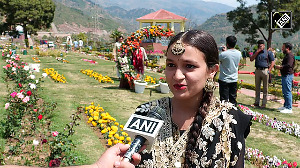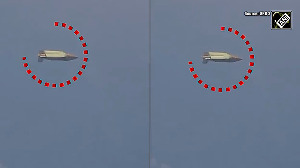Announcing that the health of Chandrayaan-3's Lander Module is normal, ISRO on Friday said that the module has successfully undergone a deboosting (slowing down) operation, taking it closer to the Moon.

The Lander Module comprising the lander (Vikram) and the rover (Pragyan), will undergo its second deboosting operation on August 20. This will lower the module to an orbit that takes it much closer to the Moon's surface.
The soft landing of the Lander on the Lunar south pole is scheduled on August 23.
"The Lander Module (LM) health is normal. LM successfully underwent a deboosting operation that reduced its orbit to 113 km x 157 km. The second deboosting operation is scheduled for August 20, 2023, around 02:00 Hrs. IST," ISRO said in a post on X (formerly Twitter).
The Lander Module of Chandrayaan-3 had successfully separated from the Propulsion Module on Thursday, 35 days after the satellite was launched on July 14.
ISRO sources had earlier said, that after separation, that the lander is expected to undergo "deboost" (the process of slowing down) operations to place it in an orbit where the Perilune (the orbit's closest point to the Moon) is 30 kilometres and Apolune (farthest point from the Moon) is 100 km, from where the soft landing on the south polar region of the Moon will be attempted.
At around 30 km altitude, the lander enters the powered braking phase, and begins to use its thrusters to reach the surface of the moon, they said, adding that at an altitude of about 100m, the lander would scan the surface to check whether there are any obstacles and then start descending to make a soft lading.
ISRO chairman S Somanath had recently said the most critical part of the landing will be the process of reducing the velocity of the lander from 30km height to the final landing, and the ability to reorient the spacecraft from horizontal to vertical direction. "This is the trick we have to play here," he said.
"The velocity at the starting of the landing process is almost 1.68 km per second, but (at) this speed (the lander) is horizontal to the surface of the moon. The Chandrayaan-3 here is tilted almost 90 degrees, it has to become vertical. So, this whole process of turning from horizontal to vertical is a very interesting calculation mathematically. We have done a lot of simulations. It is here where we had the problem last time (with Chandrayaan-2)," Somanath explained.
Meanwhile, the Propulsion Module, which had separated from the Lander Module on Thursday, will continue its journey in the current orbit for months/years, the country's space agency said.
"The SHAPE (Spectro-polarimetry of Habitable Planet Earth) payload onboard it (Propulsion Module) would perform spectroscopic study of the Earth's atmosphere and measure the variations in polarisation from the clouds on Earth -- to accumulate signatures of Exoplanets that would qualify for our habitability," ISRO said, adding that this payload is shaped by its U R Rao Satellite Centre in Bengaluru.
Post its launch on July 14, Chandrayaan-3 entered into the lunar orbit on August 5, following which orbit reduction manoeuvres were carried out on the satellite on August 6, 9, 14 and 16, ahead of separation of both its modules on August 17, in the runup to the landing on August 23.
Earlier, over five moves in the three weeks since the July 14 launch, ISRO had lifted the Chandrayaan-3 spacecraft into orbits farther and farther away from the Earth.
Then, on August 1 in a key manoeuvre -- a slingshot move -- the spacecraft was sent successfully towards the Moon from Earth's orbit. Following this trans-lunar injection, the Chandrayaan-3 spacecraft escaped from orbiting the Earth and began following a path that would take it to the vicinity of the moon.
Chandrayaan-3 is a follow-on mission to Chandrayaan-2 to demonstrate end-to-end capability in safe landing and roving on the lunar surface.
The mission objectives of Chandrayaan-3 are to demonstrate safe and soft landing on the lunar surface, to demonstrate rover roving on the Moon, and to conduct in-situ scientific experiments.
The lander has the capability to soft land at a specified lunar site and deploy the rover that will carry out in-situ chemical analysis of the Moon's surface during the course of its mobility.
The lander and the rover have scientific payloads to carry out experiments on the lunar surface.











 © 2025
© 2025